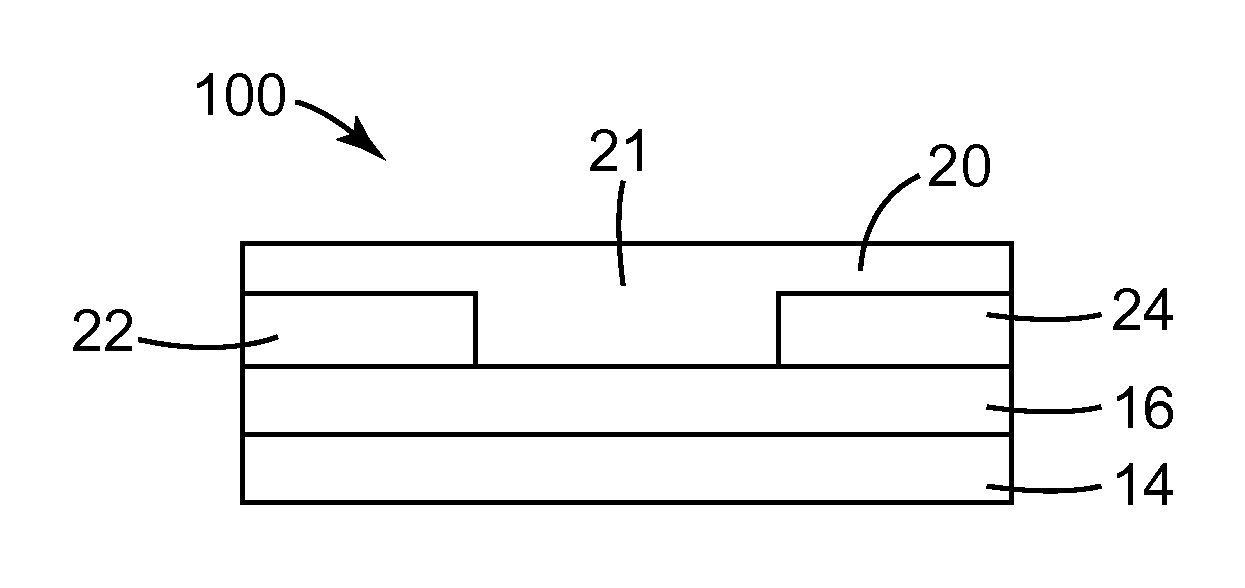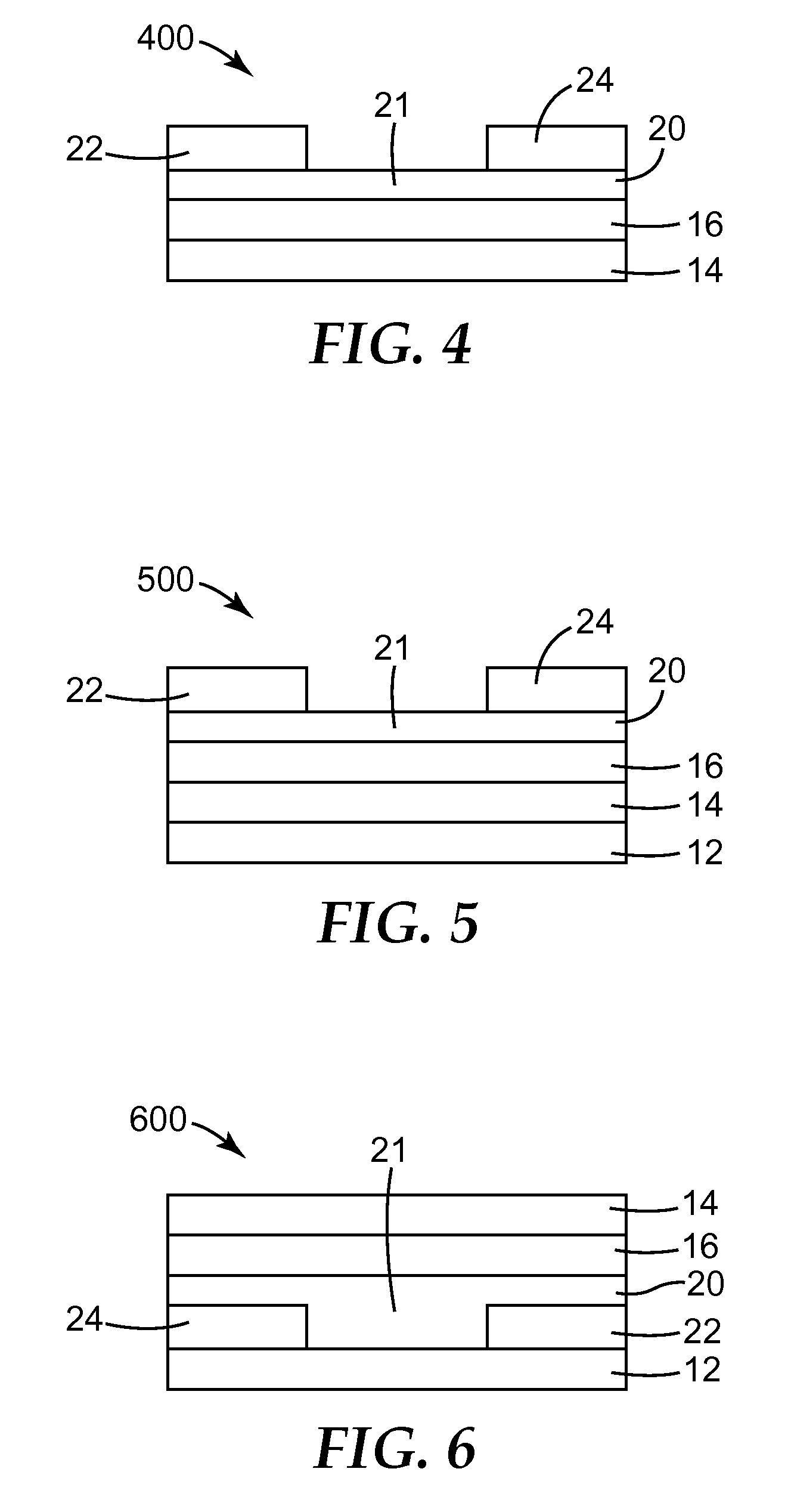Electronic devices containing acene-thiophene copolymers
a technology of acene-thiophene and copolymer, which is applied in the direction of thermoelectric devices, discharge tubes/lamp details, discharge tubes luminescnet screens, etc., can solve the problem of reducing the performance of electronic devices
- Summary
- Abstract
- Description
- Claims
- Application Information
AI Technical Summary
Benefits of technology
Problems solved by technology
Method used
Image
Examples
example 1
Organic Thin Film Transistor
Preparation of HMDS-Treated Substrates
[0123]Silicon wafers were ultrasonically cleaned in iso-propanol for 30 minutes. After drying under a N2 flow, the wafers were exposed to HDMS vapor under N2 at room temperature in a closed container for 20 hours. The wafers were then stored under N2 before film deposition.
Fabrication of Organic Thin Film Transistors
[0124]Poly(3,4-dihexylthiophene-alt-2,6-anthracene) in chlorobenzene solution (0.8 wt %) was either spin-coated (1000 revolutions per minute, 50 seconds) or knife coated on a silicon wafer or a HMDS-treated wafer. After air-drying, gold source / drain electrodes (60 nanometers thick) were patterned through a polymer shadow mask using a thermal evaporation method. A channel length (L) of 107 micrometers and a channel width (W) of 1000 micrometers were used.
Characterization of Organic Thin Film Transistors
[0125]Thin film transistors were characterized under ambient conditions using a Hewlett Packard Semiconduc...
examples 2a and 2b
Photovoltaic Cells
Fabrication of Thin Film Photovoltaic Cells
[0127]Two thin film photovoltaic cells were fabricated as follows: ITO / glass substrates with a resistance of 25 ohm / square were obtained from Thin Film Devices (Anaheim, Calif.) and were ultrasonically cleaned successively in a soap solution, deionized water, acetone, and then isopropanol. The clean substrates were dried in a nitrogen gas stream.
[0128]A conducting polymer coating solution was prepared as follow by mixing together one part of Solution I and two parts of Solution II. Solution I was prepared by adding sorbitol to 1.3 weight percent solution of poly(3,4-ethylendioxythiophene)-poly(styrenesulfonate) (PEDOT-PSS) in water. The concentration of sorbitol was 3 weight percent based on the weight of the solution. Solution II contained 32 weight percent water, 3.7 weight percent N-methyl-2-pyrrolidinone, 0.3 weight percent TERGITOL TMN-6, and 64 weight percent (SOL-IJ-G-SI) solvent, which is a mixture of ethylene glyc...
PUM
| Property | Measurement | Unit |
|---|---|---|
| temperature | aaaaa | aaaaa |
| thickness | aaaaa | aaaaa |
| thickness | aaaaa | aaaaa |
Abstract
Description
Claims
Application Information
 Login to View More
Login to View More - R&D
- Intellectual Property
- Life Sciences
- Materials
- Tech Scout
- Unparalleled Data Quality
- Higher Quality Content
- 60% Fewer Hallucinations
Browse by: Latest US Patents, China's latest patents, Technical Efficacy Thesaurus, Application Domain, Technology Topic, Popular Technical Reports.
© 2025 PatSnap. All rights reserved.Legal|Privacy policy|Modern Slavery Act Transparency Statement|Sitemap|About US| Contact US: help@patsnap.com



